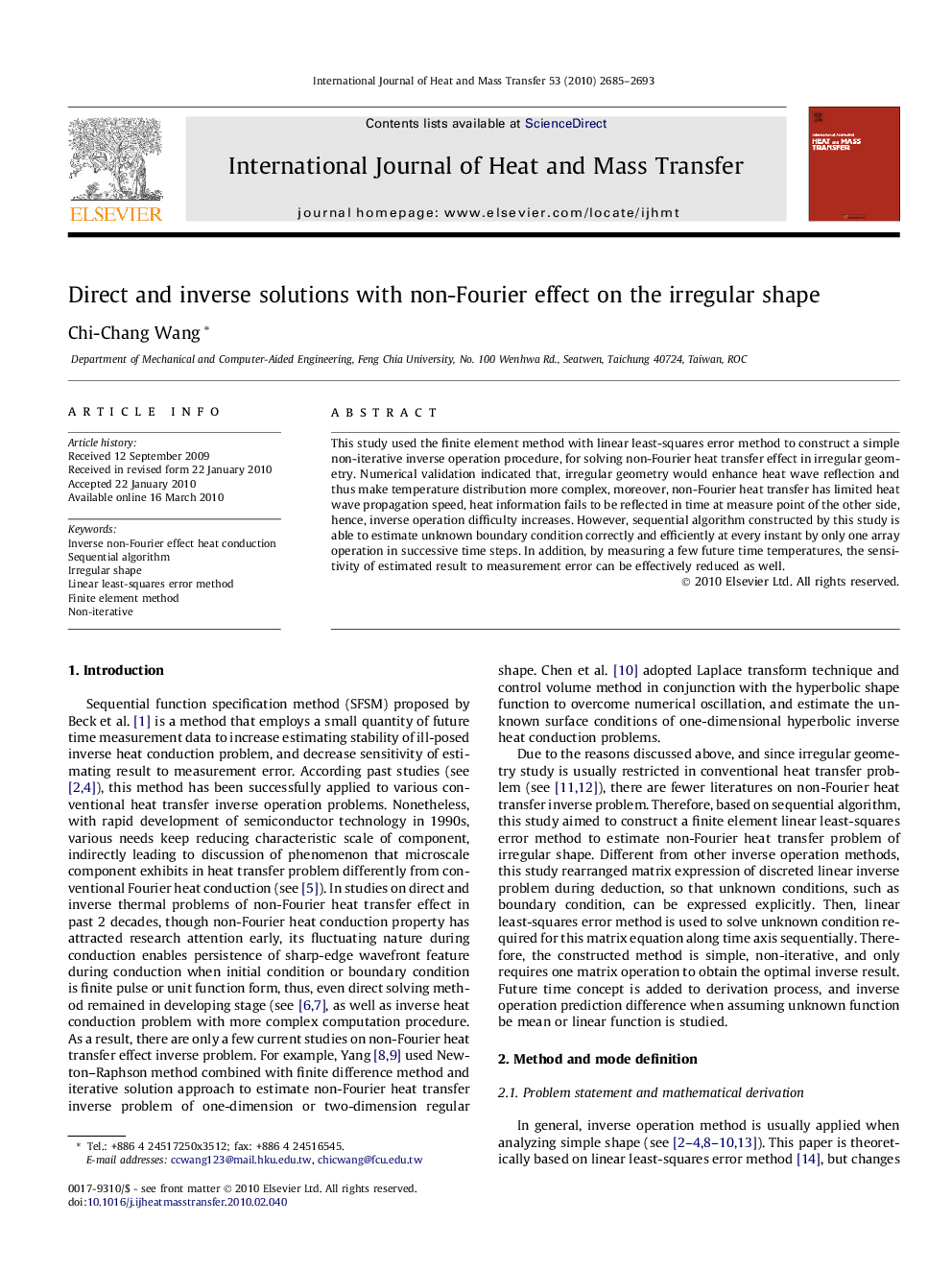| Article ID | Journal | Published Year | Pages | File Type |
|---|---|---|---|---|
| 661039 | International Journal of Heat and Mass Transfer | 2010 | 9 Pages |
Abstract
This study used the finite element method with linear least-squares error method to construct a simple non-iterative inverse operation procedure, for solving non-Fourier heat transfer effect in irregular geometry. Numerical validation indicated that, irregular geometry would enhance heat wave reflection and thus make temperature distribution more complex, moreover, non-Fourier heat transfer has limited heat wave propagation speed, heat information fails to be reflected in time at measure point of the other side, hence, inverse operation difficulty increases. However, sequential algorithm constructed by this study is able to estimate unknown boundary condition correctly and efficiently at every instant by only one array operation in successive time steps. In addition, by measuring a few future time temperatures, the sensitivity of estimated result to measurement error can be effectively reduced as well.
Related Topics
Physical Sciences and Engineering
Chemical Engineering
Fluid Flow and Transfer Processes
Authors
Chi-Chang Wang,
